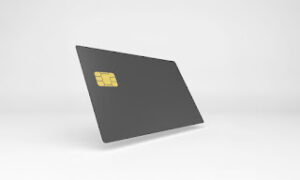Water is essential for our survival, but it is also a source of disease-causing microorganisms. These microorganisms can be dangerous to human health and cause diseases like cholera, typhoid, and dysentery. One of the most effective methods of disinfecting water is through the use of ultraviolet (UV) light. This article will provide a comprehensive guide on UV water disinfection, including what it is, how it works, its advantages and disadvantages, and its applications.
Introduction
Water is one of the most important resources we have, but it can also be a source of disease-causing microorganisms. According to the World Health Organization, around 2 billion people do not have access to clean and safe drinking water. Waterborne diseases are responsible for millions of deaths every year, especially in developing countries. Therefore, it is essential to have access to safe and clean water.
There are various methods of disinfecting water, including chemical disinfection, boiling, and filtration. However, one of the most effective and eco-friendly methods is through UV water disinfection. In this article, we will explore UV water disinfection, how it works, its advantages and disadvantages, and its applications.
What is UV Water Disinfection?
UV water disinfection is the process of using ultraviolet light to kill or inactivate microorganisms like bacteria, viruses, and protozoa. UV water disinfection systems use special lamps that emit UV-C light, which has a wavelength of 254 nanometers (nm). This wavelength is lethal to microorganisms because it damages their DNA, preventing them from reproducing.
How Does UV Water Disinfection Work?
UV water disinfection systems use a lamp that emits UV-C light, which is passed through a quartz sleeve and into the water. The UV-C light penetrates the cell wall of microorganisms, damaging their DNA and preventing them from reproducing. This process is called photodimerization, which is when two thymine bases in the DNA strand crosslink together. This crosslinking prevents the microorganism from replicating and causes it to die.
The effectiveness of UV water disinfection depends on the intensity of the UV-C light, the duration of exposure, and the quality of the water. The water must be clear and free from any particles or turbidity that can block the UV-C light from reaching the microorganisms.
Advantages of UV Water Disinfection
Chemical-Free
UV water disinfection is a chemical-free process, which means it does not add any chemicals or by-products to the water. Unlike chemical disinfectants like chlorine or ozone, UV water disinfection does not produce harmful disinfection by products that can be harmful to human health or the environment.
Effective Against a Wide Range of Microorganisms
UV water disinfection is effective against a wide range of microorganisms, including bacteria, viruses, and protozoa. It can achieve up to a 99.99% reduction of these microorganisms, making it an effective and reliable method of water disinfection.
Easy to Install and Maintain
UV water disinfection systems are easy to install and maintain, requiring little to no technical expertise. The lamps typically last for 9,000-12,000 hours and can be easily replaced when needed. The systems also require minimal maintenance, with the only requirement being periodic cleaning of the quartz sleeve.
Cost-Effective
UV water disinfection is a cost-effective method of water disinfection. While the initial cost of the system may be higher than other disinfection methods, the ongoing operational and maintenance costs are lower. UV water disinfection systems also have a low environmental impact and do not require the use of any chemicals, making them a more sustainable and cost-effective solution in the long run.
Environmentally Friendly
UV water disinfection is an environmentally friendly method of water disinfection. It does not produce any harmful by-products and does not contribute to the creation of antibiotic-resistant bacteria. UV water disinfection also uses less energy than other water disinfection methods, making it a more sustainable and eco-friendly option.
Disadvantages of UV Water Disinfection
Ineffective Against Some Microorganisms
While UV water disinfection is effective against a wide range of microorganisms, it is ineffective against some, including cryptosporidium and giardia. These microorganisms have a protective outer layer that makes them resistant to UV-C light.
Requires Clear Water
UV water disinfection requires clear water for it to be effective. Any particles or turbidity in the water can block the UV-C light from reaching the microorganisms, reducing the effectiveness of the disinfection process.
Limited Effectiveness on Biofilm
UV water disinfection is less effective against biofilm, which is a layer of microorganisms that attach to surfaces in the water. The biofilm can protect the microorganisms from the UV-C light, reducing the effectiveness of the disinfection process.
Requires Electricity
UV water disinfection systems require electricity to operate, making them reliant on a power source. In areas with unreliable electricity or no electricity, UV water disinfection may not be a suitable option.
Applications of UV Water Disinfection
UV water disinfection has a wide range of applications, including:
Residential Water Treatment
UV water disinfection can be used in residential water treatment systems to provide clean and safe drinking water. It is an effective and chemical-free method of disinfection that is easy to install and maintain.
Commercial Water Treatment
UV water disinfection is commonly used in commercial water treatment systems, such as hotels, restaurants, and hospitals. It provides an effective and reliable method of water disinfection that is cost-effective and environmentally friendly.
Municipal Water Treatment
UV water disinfection is also used in municipal water treatment systems to disinfect water before it is distributed to homes and businesses. It is an effective and sustainable method of water disinfection that helps to ensure the safety of the public water supply.
Choosing the Right UV Water Disinfection System
When choosing a UV water disinfection system, there are several factors to consider, including:
Flow Rate
The flow rate of the UV water disinfection system should be sufficient to meet the demand for clean and safe water. The flow rate is measured in gallons per minute (GPM) and should be chosen based on the size of the system and the expected water usage.
Lamp Power
The lamp power of the UV water disinfection system should be appropriate for the size of the system and the level of disinfection required. Higher lamp power can provide more effective disinfection, but also requires more electricity to operate.
Sleeve Material
The sleeve material of the UV water disinfection system should be chosen based on the water quality and the expected level of maintenance. Quartz sleeves are the most common and durable option, but may require more frequent cleaning if the water has a high level of particulate matter.
System Design
The system design of the UV water disinfection system should be chosen based on the specific application and the available space. There are several types of UV water disinfection systems available, including point-of-use and point-of-entry systems.
Conclusion
UV water disinfection is an effective, cost-effective, and environmentally friendly method of water disinfection. It can provide clean and safe drinking water for residential, commercial, and municipal applications. While it has some limitations, such as its effectiveness against certain microorganisms and the requirement for clear water, it is still a reliable and sustainable option for water disinfection. When choosing a UV water disinfection system, it is important to consider factors such as flow rate, lamp power, sleeve material, and system design.
FAQs
- Is UV water disinfection safe for drinking water?
Yes, UV water disinfection is safe for drinking water and has been approved by the EPA as a method of water disinfection.
- How long do UV lamps last?
UV lamps typically last for 9,000-12,000 hours and can be easily replaced when needed.
- Is UV water disinfection effective against all microorganisms?
No, UV water disinfection is ineffective against some microorganisms, including cryptosporidium and giardia.
- How much does a UV water disinfection system cost?
The cost of a UV water disinfection system varies depending on the size and capacity of the system. Prices typically range from a few hundred to several thousand dollars.
- How often should the quartz sleeve be cleaned?
The quartz sleeve should be cleaned periodically, typically every 6-12 months, depending on the water quality and level of particulate matter.































